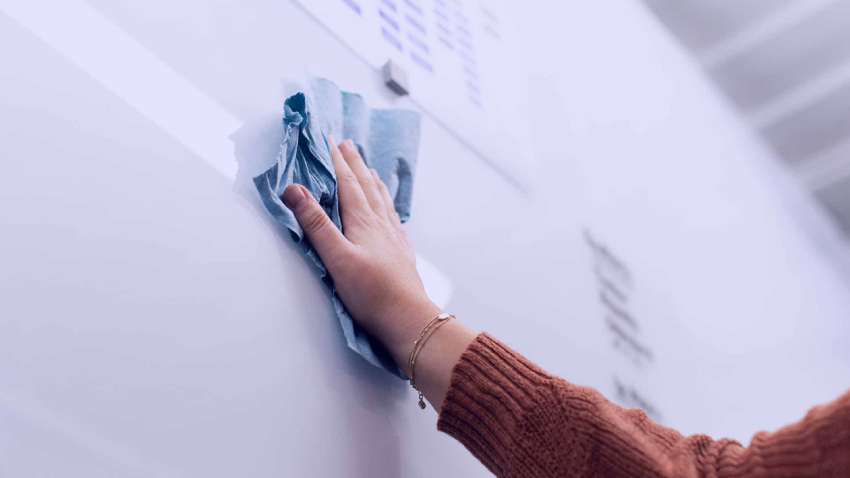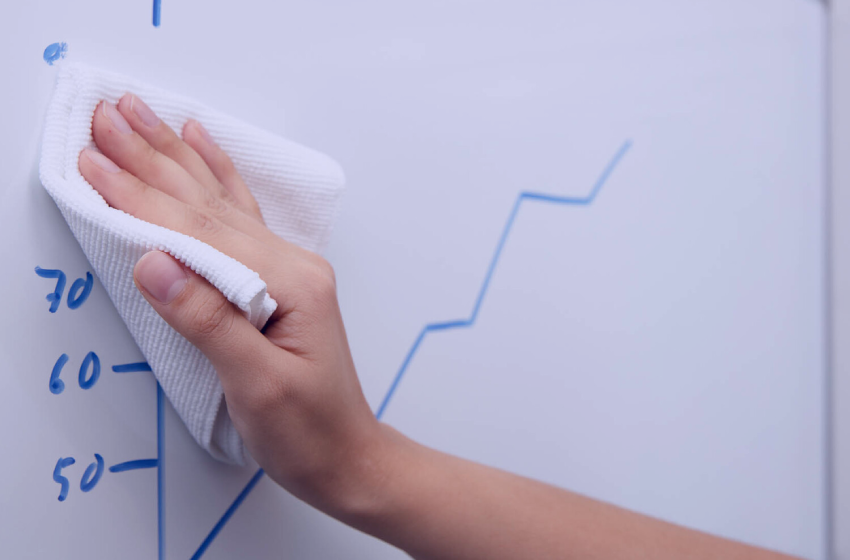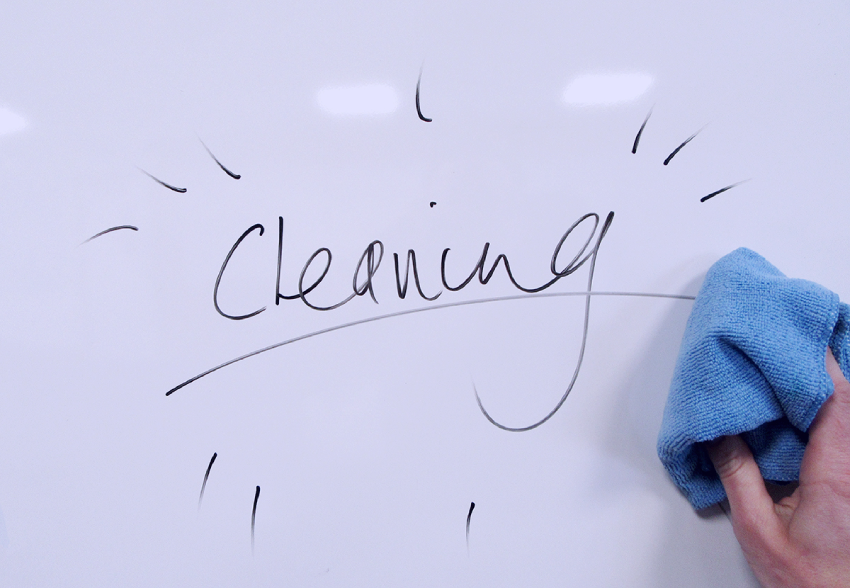A whiteboard is a valuable and extremely useful tool for capturing ideas. Whether you use a whiteboard to jot notes and reminders down at home or at work when brainstorming ideas— it will eventually become marred by stains and marks over time.
To keep your whiteboard pristine and as good as new, you can adopt a regular cleaning routine using the right materials and solutions needed. Follow these simple tips and tricks for a seamless cleaning solution for your whiteboard.
Identifying Stains
The first step towards seamlessly cleaning your whiteboard is identifying the type of marks and stains that cover it. The most common culprits are dry-erase markers that have overstayed their welcome, leaving behind their traces in the form of ghosting. Another challenge is stains, often resulting from using the wrong markers or accidental spills, which can embed themselves more stubbornly into the board’s surface. Properly distinguishing between ghosting and stains will direct the course of your cleaning strategy.
Categorizing Marks
Maintaining a whiteboard involves understanding the types of marks that appear over time—from subtle ghosting to pronounced stains that challenge its spotlessness. A gentle wipe with a designated eraser or cloth is often sufficient for ghosting. However, a more robust approach with specialized cleaners may be necessary for pronounced stains.
Assessing Stain Age
Stain age is a pivotal factor. Fresh stains are typically amenable to light cleaning measures, whereas older stains may require more intensive interventions. Acting promptly can prevent stubborn stains that stick and resist casual cleaning efforts.
Everyday Cleaning
To maintain a pristine whiteboard, regular upkeep with the right tools is paramount. A daily once-over with a microfiber cloth or eraser can work wonders, lifting dry-erase ink before it settles. Opt for “ghost-free” or “low-odor” markers to avoid hard-to-clean stains and for easy future cleanings.


